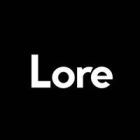
Romance Language: Unlocking Product Page Potential for Beauty Brand Storytelling

From digital-native DTC brands leveraging the power of e-commerce to traditional brands refining their digital capabilities during the online shopping rush of the pandemic, most companies have grown beyond the basics of online retail. Branding and design, social marketing and influencers have all proven their worth. Yet, when it comes to e-commerce product pages, brands still approach them as if they are transactional, with the simple function of allowing customers to buy. In reality, every product page is an open canvas of brand-building possibilities. Especially in an exploding beauty and wellness market filled with brand storytelling, these underutilised parts of a site should spark a relationship, seducing the consumer with the narrative of the product.
Product storytelling is an especially effective strategy now because it’s an opportunity heavyweights like Amazon and Target don't lean into. Their cookie cutter product detail pages are not telling each specific brand’s/product’s story in an effective way or customised to the needs of the modern consumer – most of whom are overwhelmed with choice in the current e-commerce landscape and care more about how a product makes them feel. If a product's story can make consumers feel good, they’ll buy because they want that feeling to become part of their reality.
Any brand that wants to compete on more than just price needs to embrace product page storytelling – using the opportunity to make the case that a product is more valuable, more unique and fits the consumers’ lifestyle. Here’s how to tell a beauty or wellness product page story that seduces.
Contextualise the product
Never forget to set the context – to build a relationship between product and consumer, a product page needs a strong foundation that contextualises the product. Product detail pages need to call out any high level benefits while also describing the customers’ experience of owning the product – how it will feel, what it will smell like, how it will improve their lives and what the outcomes will be. Then, this context needs to be reinforced visually with iconography and imagery to help build a true connection.
However, don’t make the common mistake of thinking more is more – avoid overwhelming consumers with large blocks of text or visuals that need to be carefully analysed. Instead, any context you choose to spotlight needs to be visually broken up and easily scannable, so that consumers can pinpoint the benefits and find the information they’re looking for quickly.
Multivitamin standout Ritual does a great job of this, in particular of telling a complex ingredient story. When it comes to vitamins, it can be very easy to get in the weeds with too much scientific info that isn't easily digestible or understandable. Ritual avoids this by making sure that the product descriptions at the top of each product page are very straightforward - describing who the product is intended for and what it will do. Then, if a customer is looking to delve deeper into the product story, they have modules that establish health needs (such as brain health, bone health), which ingredients fulfil those needs, and offer a deeper dive into the traceability of ingredients.
Be strong, emotive, and reassuring
Brand messaging and copywriting can help bring the consumer into the world of the brand, and tell a product's story in a way that changes a consumer from a one-time buyer to a long time fan. But only if that messaging is emotional without feeling manipulative. The goal is to make a buyer feel safe and assured in their purchasing decision, which takes the right mix of empathy and information.
For example, natural deodorant brand Cleo+Coco’s product pages use imagery and copy that is emotive and romances the customer from the get go – animated gifs utilised as product backdrops and product images that evoke a sense of serenity and closeness to nature. Even the names of the products – like ‘Sweet Surrender’ and ‘Calm Routine’ – have a soft tone that brings the consumer into the relaxing world of the brand.
However, where the product pages really shine are in their ability to make customers feel safe in their purchase. A common hesitation for customers in purchasing natural deodorant is efficacy. So, in telling the story of this product, the page uses callouts from a blind panel study to overcome this potential roadblock to purchase, visually highlighting stats with larger text to ensure it is easily digestible.
Be iconic
Iconography typical to the beauty and wellness industries can sometimes be treated as an afterthought, as they are usually pretty standard depending on the brand and product type. But, when approached more thoughtfully, with an eye toward creating a voice for the brand, they can also help to strengthen the product and brand story. From basic icons that represent product specific benefits such as scent, what skin type or concern its for (oily, dry, acne etc.), no synthetic fragrance, aluminium free, to higher level icons noting that the product is cruelty free, vegan, organic, plastic free, made with natural and/or traceable ingredients, has recyclable packaging, or is biodegradable – these types of simple iconography can act as strong statements of product quality, function and overall brand purpose.
Accessories brand Truffle’s product pages are a perfect example of icon-based storytelling, using custom-designed iconography throughout its site. From a plane icon that calls out TSA approved products, to various leaf-based icons signifying vegan or biodegradable status, to the ‘Perfect for’ module which contextualises Truffle’s products by showing icons of relevant objects that Truffle can help organise better – each not only helps reinforce the brand’s messaging but the products’ high-quality, sustainable design.
Balance is key – of course it’s important to take a step back to make sure product storytelling isn’t going too far by overwhelming the consumer with copy and visuals. But if a brand can keep the product story engaging, concise, and easily digestible, there’s no reason why every product page can’t bring a brand and consumer closer together, leading to both a purchase and a lasting brand relationship.
By Eliza Goldsbro, digital strategy and project management, SMAKK










